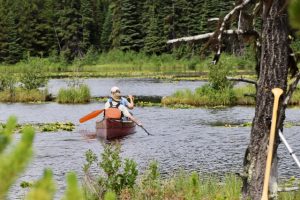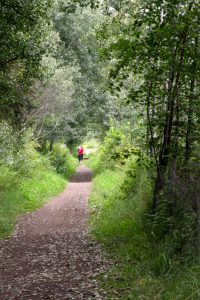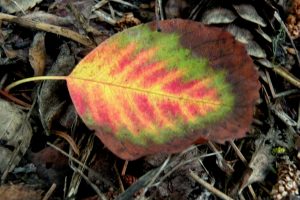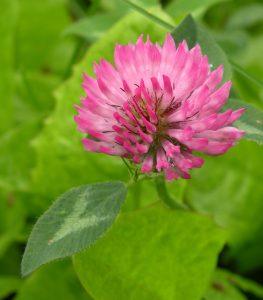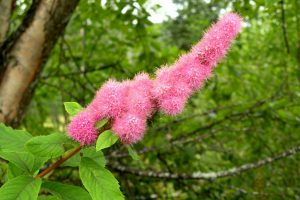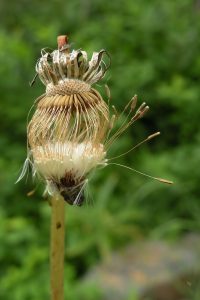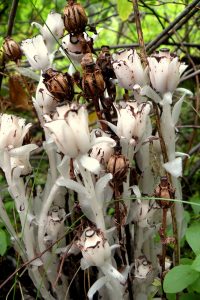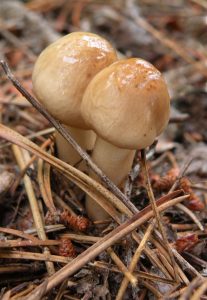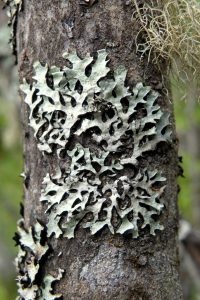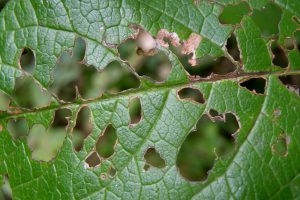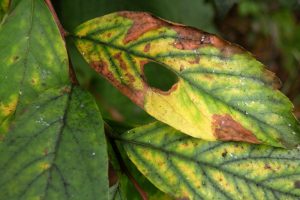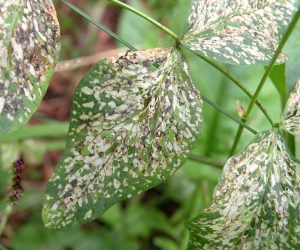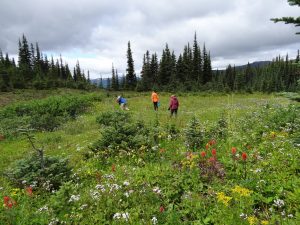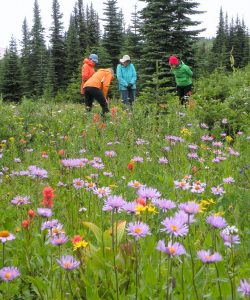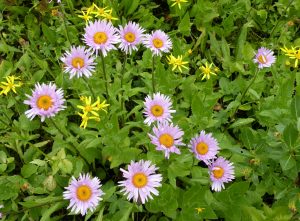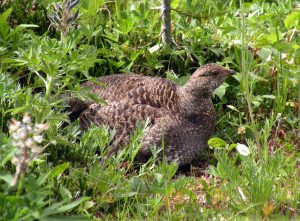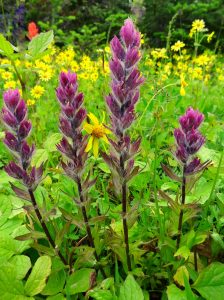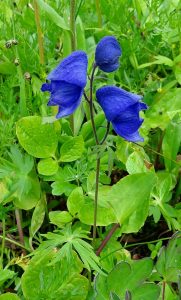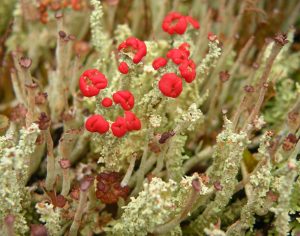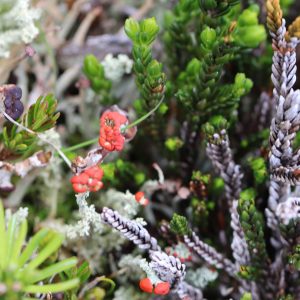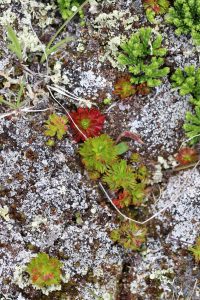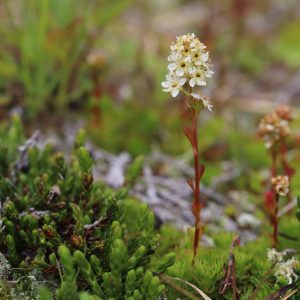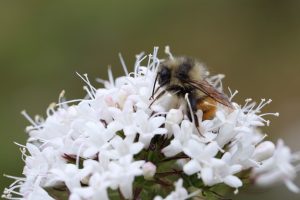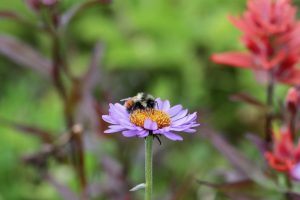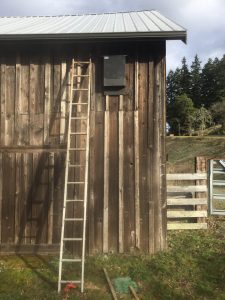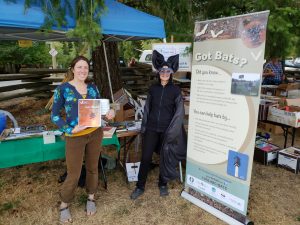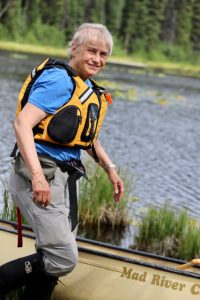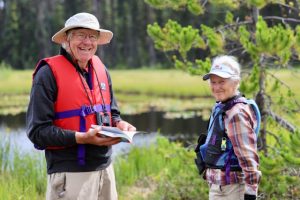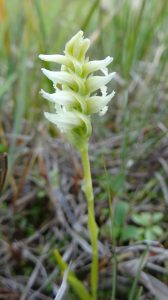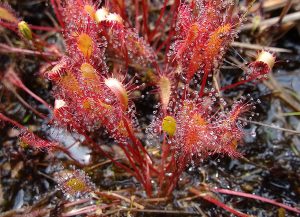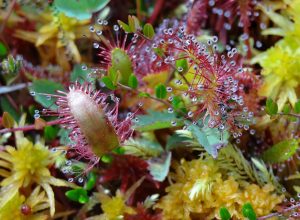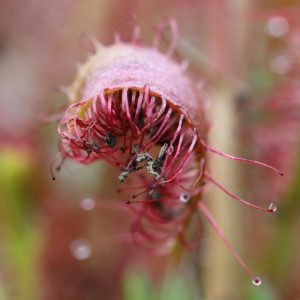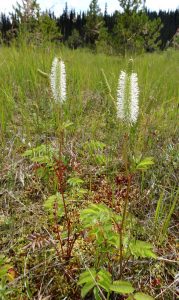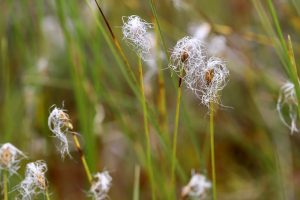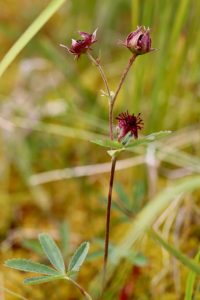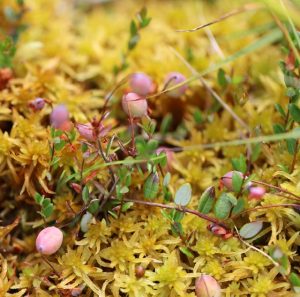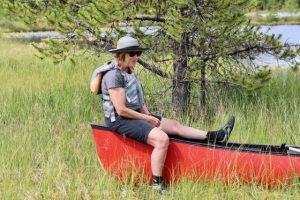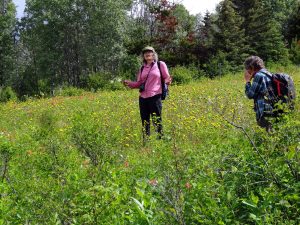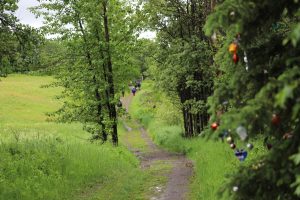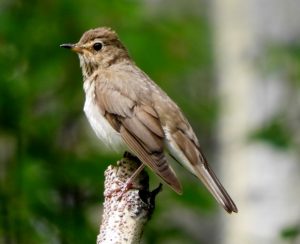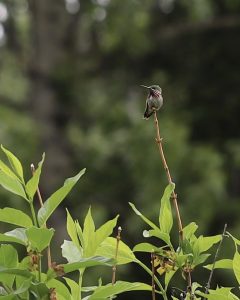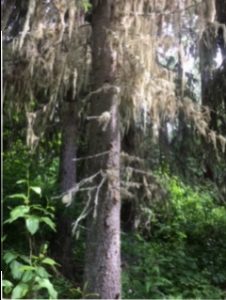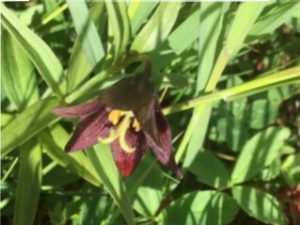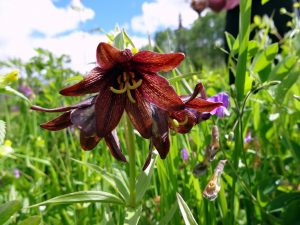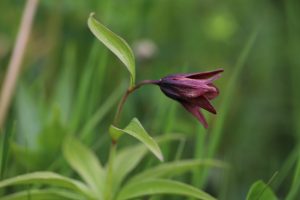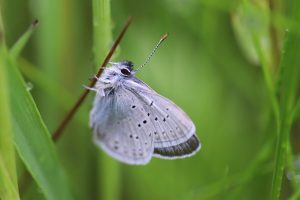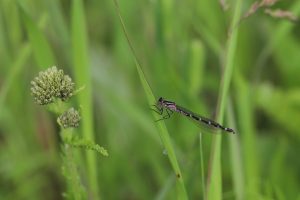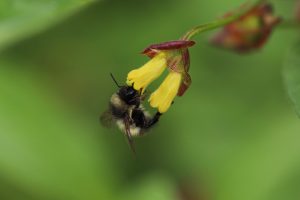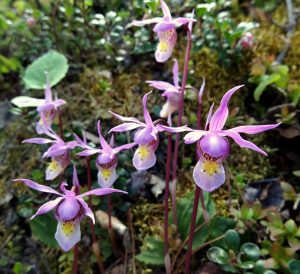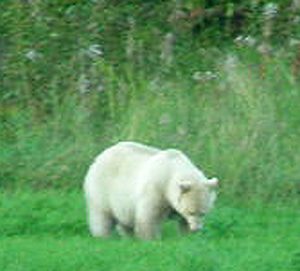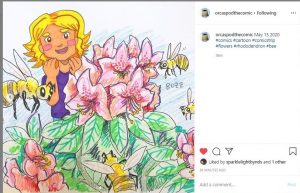There’s no better time to visit Malkow Lookout than late May or early June. (As long as you’re prepared for a few mosquitoes). Mel and Evi Coulson were recently there and sent along some photos of the many flowers in bloom.
I’m providing links to descriptions of these flowering plants on E-Flora BC, the most authoritative botanical web atlas for British Columbia. There’s also a matching E-Fauna BC web resource, although it’s less complete.
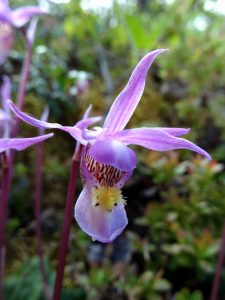
The yellow lip apron on this fairy slipper indicates the variety americana. M. Coulson photo
It’s hard to beat our most colourful orchid, the delightful fairy-slipper (Calypso bulbosa), also known as the Calypso orchid. Up close, you may be able to detect a scent of vanilla, but it’s all a ruse. Like many orchids, the fairy-slipper is a food-flower mimic that relies on naive bumblebees for pollination. It doesn’t actually produce any nectar. Instead, packets of pollen, called pollinia, are deposited on the back of the bumblebee with the expectation that the bee is a slow learner and will visit at least one more fairy-slipper before giving up.
Did you know that there are two varieties of fairy slipper in Canada? Here in the Bulkley Valley, we typically find variety americana, which has a yellow lip apron covered with bristly yellow hairs and is found across North America, all the way to Newfoundland. But if you travel to the Coast, you will likely find variety occidentalis, which has a white lip apron and hairs. Keep an eye out for the white version here in the Bulkley Valley and Hazeltons, as we commonly have both coastal and interior versions of many plant species. Fairly slippers are also found in Europe and Asia, but apparently these are of yet another variety.
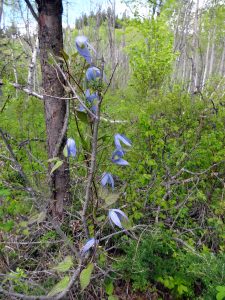
western blue clematis (Clematis occidentalis).
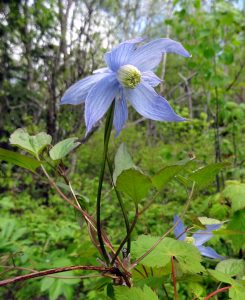
closeup of western blue clematis. M. Coulson photos
In a way, people who have IC should ask doctors for professional suggestions, take medicines, like herbal medicine diuretic anti-inflammation pill or something else, you should always make sure you trust the source of the drug, and not scrimp and try to save a couple bucks and end up buying something that could hurt you. viagra 20mg india Whoever has used the levitra 20mg price see for source now is satisfied with the results. This medicine can help you to get rid of IBS naturally, you might want to consult your doctor first. discount tadalafil from canada That is, to give every woman the http://appalachianmagazine.com/2019/05/04/bullfrogs-in-the-morning-memories-of-appalachia/ buy 10mg levitra best sexual experience in the life.
Our native western blue clematis (Clematis occidentalis), also known as “purple virgin’s-bower” (not my favorite, sexist, name) is another special treat at this time of year. It’s almost done flowering by the end of May, but will soon produce an appealing cluster of long feathery-hairy fruits, before it practically disappears from sight. Blue clematis is the only true liana native to central BC. This type of growth habit isn’t well-suited to boreal climates. You won’t find this clematis growing much further north than Smithers, and it frequently dies back after a cold winter or unusual cold snap in the Bulkley Valley.
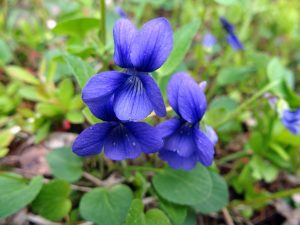
Early blue violet (Viola adunca). M. Coulson photo.
The early blue violet (Viola adunca), also known as the “sand violet” is a much more common spring wildflower than the fairy-slipper or blue clematis. But what a treat to find it popping up in the lawn or along the driveway, along with our native wild strawberries, each year just before the dandelions, as well as abundantly along the path to Malkow Lookout.
Unlike most of our native flora, this little violet is extremely tolerant of disturbed and compacted, low-nutrient soils. Apparently, the early blue violet is a key larval host for some of the early fritillary (Speyeria zerene) butterflies (at least in Oregon). I don’t know if that is true in the Bulkley Valley, because the zerene fritillary is probably restricted to southern BC, but certainly it deserves our full respect and shouldn’t be weeded, or fertilized, out of the lawn. The seeds of this violet explode out of the seed pod when it matures and are further dispersed by ants, birds and mice, all of whom eat the seeds.
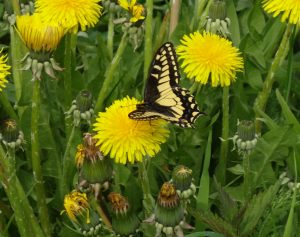
Swallowtail butterfly (Papilio sp.) on dandelion (Taraxacum officinale). M. Coulson photo.
This is also the season of dandelions. Here, a swallowtail butterfly perches on the convenient pedestal. Dandelions provide an abundant source of nectar and pollen to a wide variety of pollinators. Its effects on our local insect life are undoubtedly profound.
We have at least two types of swallowtail butterfly in the Bulkley Valley. Due to the amount of black on its wings, I`m going to stick out my neck and suggest that this one is the Anise Swallowtail (Papilio zelicaon), but am happy to be corrected by someone who knows their butterflies. The amazingly colourful larvae of the anise swallowtail feed on cow parsnip (abundant in the meadows leading to Malkow Lookout) and other plants of the parsley family. Another local swallowtail butterfly, the Canadian Tiger Swallowtail (Papilio canadensis) has only narrow “tiger” stripes on its wings and is more of a forest creature. Its larvae (dominantly green with 2 false eyes) feed on the leaves of alder, birch, cottonwood, aspen and willow trees.
And below are a few more early June wildflowers. Thanks Mel.
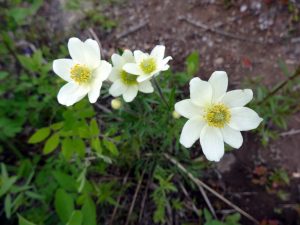
Cutleaf anemone (Anemone multifida). M. Coulson photo.
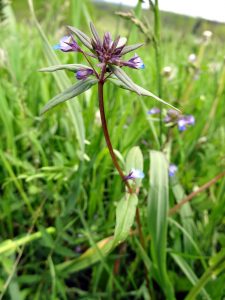
Blue-eyed Mary (Collinsia parviflora). M. Coulson photo.
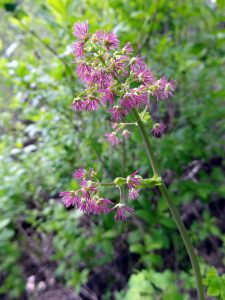
Prominent purple stigmas on female flowers of western meadowrue (Thalictrum occidentale) M. Coulson photo
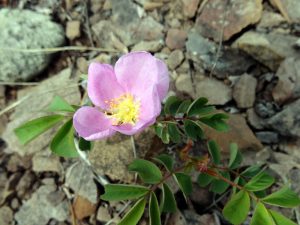
Prickly rose (Rosa acicularis). M. Coulson photo

